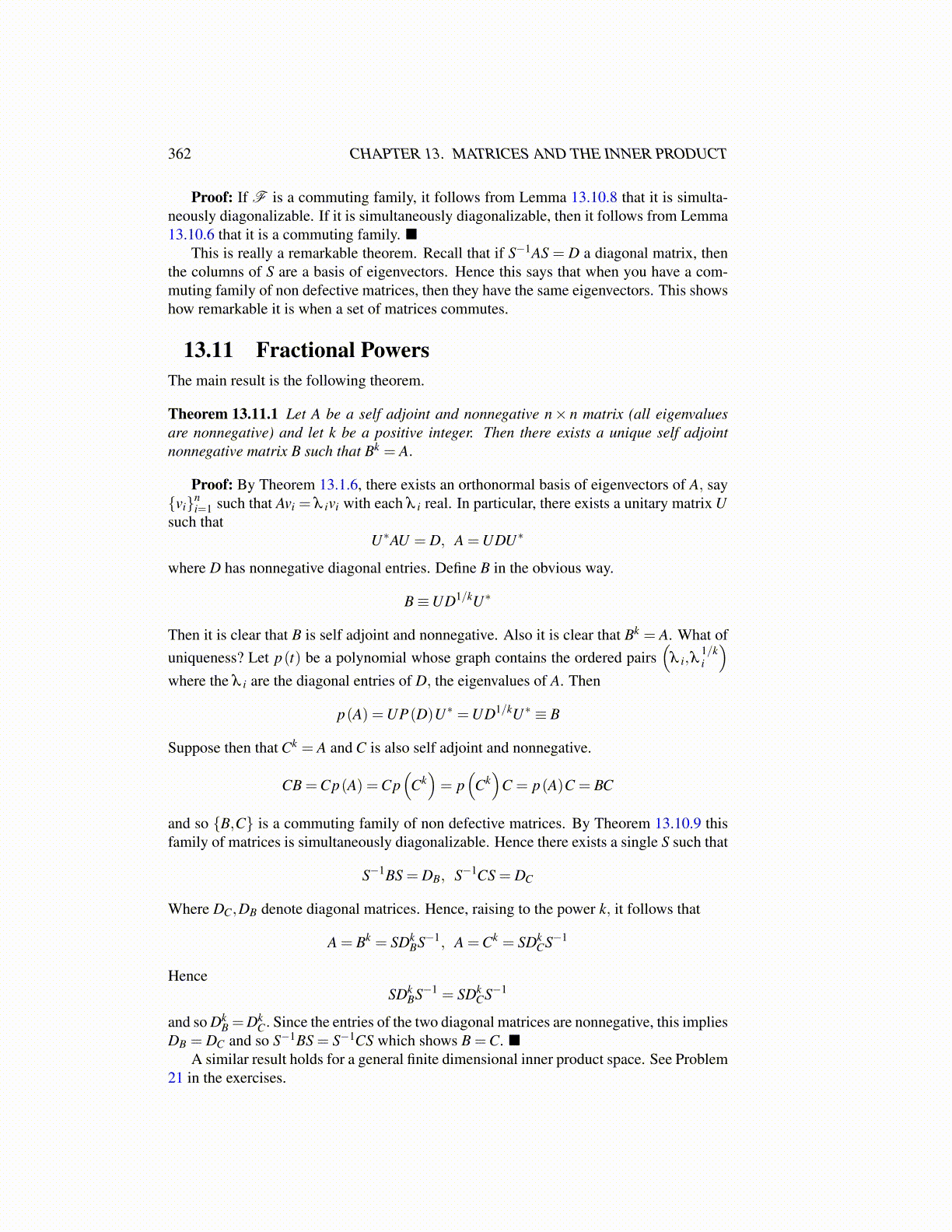
362 CHAPTER 13. MATRICES AND THE INNER PRODUCT
Proof: If F is a commuting family, it follows from Lemma 13.10.8 that it is simulta-neously diagonalizable. If it is simultaneously diagonalizable, then it follows from Lemma13.10.6 that it is a commuting family. ■
This is really a remarkable theorem. Recall that if S−1AS = D a diagonal matrix, thenthe columns of S are a basis of eigenvectors. Hence this says that when you have a com-muting family of non defective matrices, then they have the same eigenvectors. This showshow remarkable it is when a set of matrices commutes.
13.11 Fractional PowersThe main result is the following theorem.
Theorem 13.11.1 Let A be a self adjoint and nonnegative n× n matrix (all eigenvaluesare nonnegative) and let k be a positive integer. Then there exists a unique self adjointnonnegative matrix B such that Bk = A.
Proof: By Theorem 13.1.6, there exists an orthonormal basis of eigenvectors of A, say{vi}n
i=1 such that Avi = λ ivi with each λ i real. In particular, there exists a unitary matrix Usuch that
U∗AU = D, A =UDU∗
where D has nonnegative diagonal entries. Define B in the obvious way.
B≡UD1/kU∗
Then it is clear that B is self adjoint and nonnegative. Also it is clear that Bk = A. What ofuniqueness? Let p(t) be a polynomial whose graph contains the ordered pairs
(λ i,λ
1/ki
)where the λ i are the diagonal entries of D, the eigenvalues of A. Then
p(A) =UP(D)U∗ =UD1/kU∗ ≡ B
Suppose then that Ck = A and C is also self adjoint and nonnegative.
CB =Cp(A) =Cp(
Ck)= p
(Ck)
C = p(A)C = BC
and so {B,C} is a commuting family of non defective matrices. By Theorem 13.10.9 thisfamily of matrices is simultaneously diagonalizable. Hence there exists a single S such that
S−1BS = DB, S−1CS = DC
Where DC,DB denote diagonal matrices. Hence, raising to the power k, it follows that
A = Bk = SDkBS−1, A =Ck = SDk
CS−1
HenceSDk
BS−1 = SDkCS−1
and so DkB =Dk
C. Since the entries of the two diagonal matrices are nonnegative, this impliesDB = DC and so S−1BS = S−1CS which shows B =C. ■
A similar result holds for a general finite dimensional inner product space. See Problem21 in the exercises.